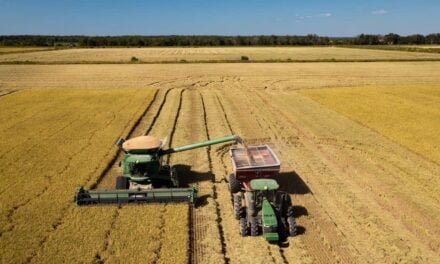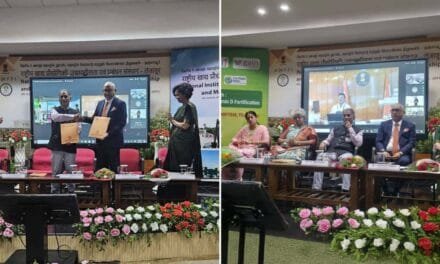For the food and beverage industry water is a critical input. If futuristic need projections are to be taken seriously, our water needs may burgeon to more than 7 trillion cubic meters in another 35 years! However, there is considerable scope to conserve water and reduce its water footprint through technically sound solutions, writes V.H. Potty.
There is a growing consensus that the time has come to launch a coordinated global action program to reduce the hidden water footprint embedded in food and beverage production. But how feasible is this? The current estimates of water usage in these sectors are staggering, and even when averaged on a per-person basis, the figures remain alarmingly high. Experts suggest setting a global target to reduce water usage in food production by at least 20% within the next five years—a goal that, with concerted effort, may be within reach.
Globally, each individual indirectly consumes between 2,000–5,000 liters of water daily through food, translating into an annual usage of 730,000–1.825 million litres per person. To meet basic nutritional and hygiene requirements, experts suggest a daily minimum of 4,000 litres of water per person, far exceeding local availability in many regions. This challenge necessitates efficient water use and the incorporation of sustainable agricultural practices.

As per the UN database each person consumes between 2,000-5,000 liters of water directly or indirectly through the food consumed every day working out to a staggering figure of 7.3 lakh liters to 18.25 lakh liters annually!
By a rough estimate, we use around 70% of all freshwater available for agriculture and allied activities while the industrial sector absorbs another 20%, leaving just about 10% for domestic use. However, this supply dynamics must remain dynamic, with the ever-growing population calling for increased food production and more incredible water for industrial and domestic use. From where are we going to get this additional supply?
If futuristic need projections are to be taken seriously, our water needs may burgeon to more than 7 trillion cubic meters in another 35 years! What will the impact of such a situation be on people’s habitats? Simply put, almost 70% of them would be living in water-starved areas, while today, the corresponding figure is just 7%! Under such dire predictions, can the world close its eyes, praying to God to save us without doing anything ourselves?
By a rough estimate, we use around 70% of all freshwater available for agriculture and allied activities while industrial sector absorbs another 20%, leaving just about 10% for domestic use.
What can be done to conserve water?
Sure, a lot can be done if we take a common sense approach to solve the impending water crisis. Efforts by all, including individuals, families, educational institutions, industries, farmers and everyone having a stake in preventing a water famine in future, must put their heads together to cut down on water use, conserve water and deploy modern technologies to recycle water. Efforts must be redoubled to reclaim pure water from seawater and brackish water bodies through low-cost technologies, as Israel and Gulf countries have shown to the world. If this has to be converted into an action programme, some essential steps must be considered.
The primary responsibility of governments worldwide must be to reorient their food production policies to cut down on water usage by 20% by different stakeholders within a matter of 5 years. Though the industry uses less water than farmers, there is considerable scope to reduce its water footprint through technically sound solutions including water recycling in a big way. Probably it can get support from the governments through financial and other incentives to adopt them in a big way and see the impact almost immediately. How effective government cajoling can be seen in Tamil Nadu, where rainwater harvesting has been made mandatory in the city of Chennai way back, and the water shortage there is no more a critical issue.
Investment in water management technologies
Substantial investments in water management technologies and water purification processes are inevitable, and the world can no longer shy away from this responsibility. It is known that the world will need 60% more food by 2050 to feed the population, and even with the best of technologies, an extra 20% of the water will have to be secured to make the additional food required by then.
Policymakers must prioritize water as a human right and a global common good, emphasizing equitable access while fostering resilience against the impacts of climate change. The global community can safeguard water resources for future generations and maintain ecosystem stability by addressing these systemic issues.
As for the food and beverage industry, water is a critical input. There cannot be any compromise on water needs if product safety is to be ensured. Operations like raw material washing, cleaning, formulation, steam generation, packing, etc., need water, and that too is germ-free water. Food scientists are making continuous improvements to reduce water needs to as minimum as possible. Water recycling is an area that needs urgent attention. The government has a significant role in facilitating and encouraging the industry to go in for massive recycling efforts through appropriate and practical quality and safety standards and financial incentives. It is time we realize that water is not an individual’s problem or a particular nation’s problem but it a global problem requiring cooperative global efforts.
Sources: World Economic Forum, Oxfam, EcoWatch, UN Water Conference. | Photo created by jcomp – www.freepik.com
















